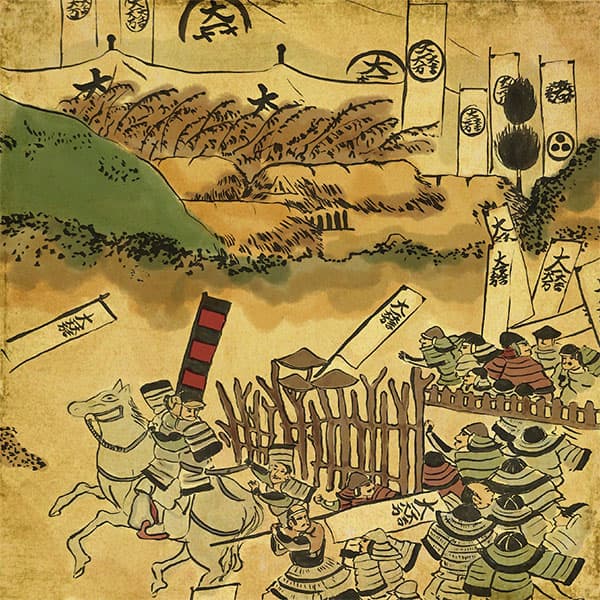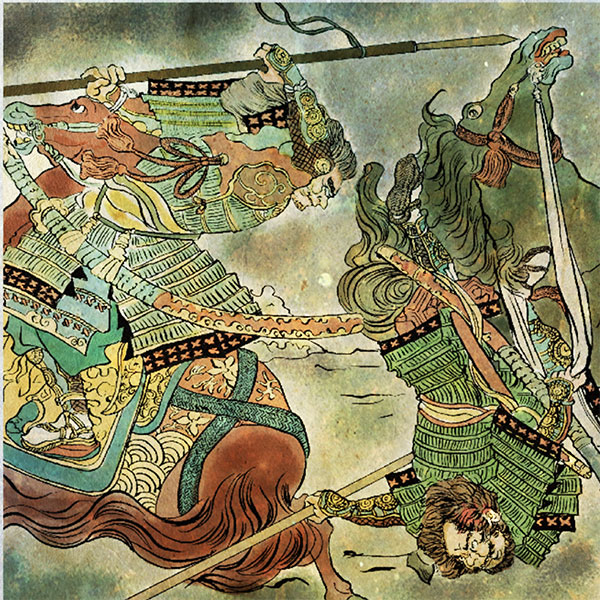Harunobu Arima (1/2)Christian daimyo who worked hard at trade

Harunobu Arima
- Article category
- biography
- name
- Arima Harunobu (1567-1612)
- place of birth
- Nagasaki Prefecture
- Related castles, temples and shrines

Shimabara Castle
- related incident
Japan has developed on its own while incorporating the cultures of China and other countries. However, during the Sengoku period, Western culture was introduced to Japan. The introduction of guns changed the face of warfare, but Christianity also became a religion. Christianity was also linked to overseas trade and spread among the feudal lords of western Japan, especially Kyushu. One of the feudal lords who converted to Christianity was Harunobu Arima. This time we will look at Harunobu Arima.
Who is Hizen Arima?
The Arima clan of Hizen Province (present-day Nagasaki Prefecture and Saga Prefecture) is said to be a descendant of Fujiwara Sumitomo or Taira Naozumi, who practiced piracy during the mid-Heian period.
In addition to this, there is also the Settsu Arima clan, which ruled Arima-go, Settsu Province, but it is unrelated to this clan.
The Hizen Arima clan, which built Hinoe Castle on the southern tip of present-day Nagasaki Prefecture, further south of the Shimabara Peninsula, and ruled over the entire area, expanded in the middle of the Muromachi period during the era of Takasumi Arima, and his son, Haruzumi Arima, in the era of Shimabara. He ruled over the peninsula and became a Sengoku daimyo. Haruzumi's grandson was Harunobu Arima.
From Harunobu Arima's succession to the family headship to the Battle of Okitanawate
Harunobu Arima was born in 1567 as the son of Yoshisada Arima, the lord of Hinoe Castle.
Due to the early death of his older brother Yoshizumi in 1571, Harunobu became the head of the Arima family at the age of five. At this time, the Arima family followed Otomo Yoshishige (Sorin) of Bungo Province (present-day Oita Prefecture), who also served as the Shugo of Hizen Province. Harunobu, who inherited the headship of the family, received an epithet from Yoshishige Otomo and called himself ``Shizumi'' and ``Shiki'' (in this story, it is unified with Harunobu Arima).
However, in 1577, Otomo Yoshishige fought against the Shimazu family, which had expanded its power from Satsuma Province (the Battle of Mimikawa), and was defeated and lost many of his vassals. The Otomo family declined in power, and the Ryuzoji family rose to prominence in Hizen Province in northern Kyushu. Harunobu Arima succumbs to the Ryuzoji family.
However, in 1584, the Shimazu family, who had moved north, and the Ryuzoji family, who had moved south from Hizen Province and tried to expand their territory, came into conflict. Harunobu sided with the Shimazu family, but when the Ryuzoji family learned of this, they decided to subjugate the Arima family. The Arima family and the Ryuzoji family, who requested reinforcements from the Shimazu family, ended up fighting. The Battle of Okitanawate. In this battle, the Ryuzoji family lost its head, Takanobu Ryuzoji, and declined.
In this way, Kyushu was on the verge of being dominated by the Shimazu family, who won the Battle of Okitanawate.
under the Toyotomi government
In Kyushu, the only person who resisted the Shimazu family was Yoshishige Otomo. However, the Otomo family was attacked by the Shimazu family, and the Otomo family was left in the lurch. Therefore, Otomo Yoshishige asked for help from Toyotomi Hideyoshi, who was expanding his influence in the Kinki region.
In 1587, when Toyotomi Hideyoshi began the pacification of Kyushu, Arima Harunobu cut ties with the Shimazu family and joined the Toyotomi family. After Toyotomi Hideyoshi conquered Kyushu, he became a ruler of Japan.
After Toyotomi Hideyoshi unified Japan, he began to conquer the Korean Peninsula. Daimyo mainly from western Japan were mobilized for this conquest. Harunobu spent about six years on the Korean peninsula while serving in Korea.
However, Toyotomi Hideyoshi died. After Hideyoshi's death, Tokugawa Ieyasu rose to power. At the Battle of Sekigahara, fought between Tokugawa Ieyasu and Ishida Mitsunari, Arima Harunobu sided with the Tokugawa side and attacked Ishida's daimyo in Kyushu. In this way, Arima Harunobu was able to maintain his territory even during the era of the Tokugawa family.
Harunobu and Christianity
By the way, although Arima Harunobu changed the daimyo he belonged to, there was one thing he served throughout his life. It's Christianity.
When Harunobu Arima took over as head of the family, he hated Christianity.
However, in 1580, he was baptized as a Christian and took the baptismal name of Don Protagio. After that, he became a devout Christian and demolished temples and shrines to use the materials to build churches and schools. He also sent the Tensho Children's Mission to Europe with Yoshishige Otomo and his uncle Sumitada Omura.
This also involves trade with foreign countries. Overseas trade was active mainly among the feudal lords of Kyushu, and Arima Harunobu was dispatched many times along with the Shimazu family and the Matsuura family. Missionaries and Christians aided this trade, allowing the Arima family to expand their military despite the small area they controlled. At the Battle of Okitanawate, where they teamed up with the Shimazu family to fight against the Ryuzoji family, they wore the ``holy relics'' sent by the Pope and raised a flag emblazoned with a cross.
By the way, Harunobu's Christian faith also has a negative side. Missionaries asked him to send slaves to Portuguese territory in Goa, and he tortured the people by capturing young men and women from within the territory and sending them there. He protected Christians until Toyotomi Hideyoshi issued a ban on Christianity in 1587, and continued to personally protect his faith.
Tensho Embassy to Europe Youth Mission
In the 10th year of Tensho (1582), a mission consisting of four young boys was sent to Rome as envoys of Kyushu's Christian feudal lords, Otomo Sorin, Omura Sumitada, and Arima Harunobu.
It was invented by Alessandro Valignano.
- Asked the kings of Spain and Portugal for financial and spiritual support for missionary work.
- Help promote missionary work by allowing people to actually see Europe and come into direct contact with the glory and greatness of Christianity.
It was aimed at something.
The four boys are Mansho Ito (chief envoy), Miguel Chijishi (chief envoy), Julian Nakaura (deputy envoy), and Martino Hara (deputy envoy). Of these, Miguel Chijiwa (chief envoy) was a cousin of Harunobu Arima (Miguel Chijiwa later apostatized).
The group departed from Arima Seminarillo in 1582 and was seconded from Nagasaki, and in 1585 had an audience with Pope Gregory XIII. granted Roman citizenship. On his way back, he was unable to return to Japan due to Toyotomi Hideyoshi's order to expel battelens, but he returned in 1590. The Gutenberg printing press they brought back was the first to print Japanese books in letterpress, and it was called the Christian version.
Nosa Senhora da Graça incident
It was Keicho 13 (1608). Even after the Battle of Sekigahara, Arima Harunobu, who ruled Hinoe in Hizen Province, continued to engage in overseas trade. This is a story about when Harunobu's ship called at Macau, a Portuguese colony, for the winter. Japanese sailors get into a scuffle over a transaction. The Portuguese Macao commander, Pessoa, put down the melee, but there were many casualties on the Japanese side.
- related incident

- WriterTomoyo Hazuki(Writer)I have loved history and geography since my student days, and have enjoyed visiting historical sites, temples and shrines, and researching ancient documents. He is especially strong in medieval Japanese history and European history in world history, and has read a wide range of things, including primary sources and historical entertainment novels. There are so many favorite military commanders and castles that I can't name them, but I especially like Hisashi Matsunaga and Mitsuhide Akechi, and when it comes to castles, I like Hikone Castle and Fushimi Castle. Once you start talking about the lives of warlords and the history of castles, there's a side of you that can't stop talking about them.






